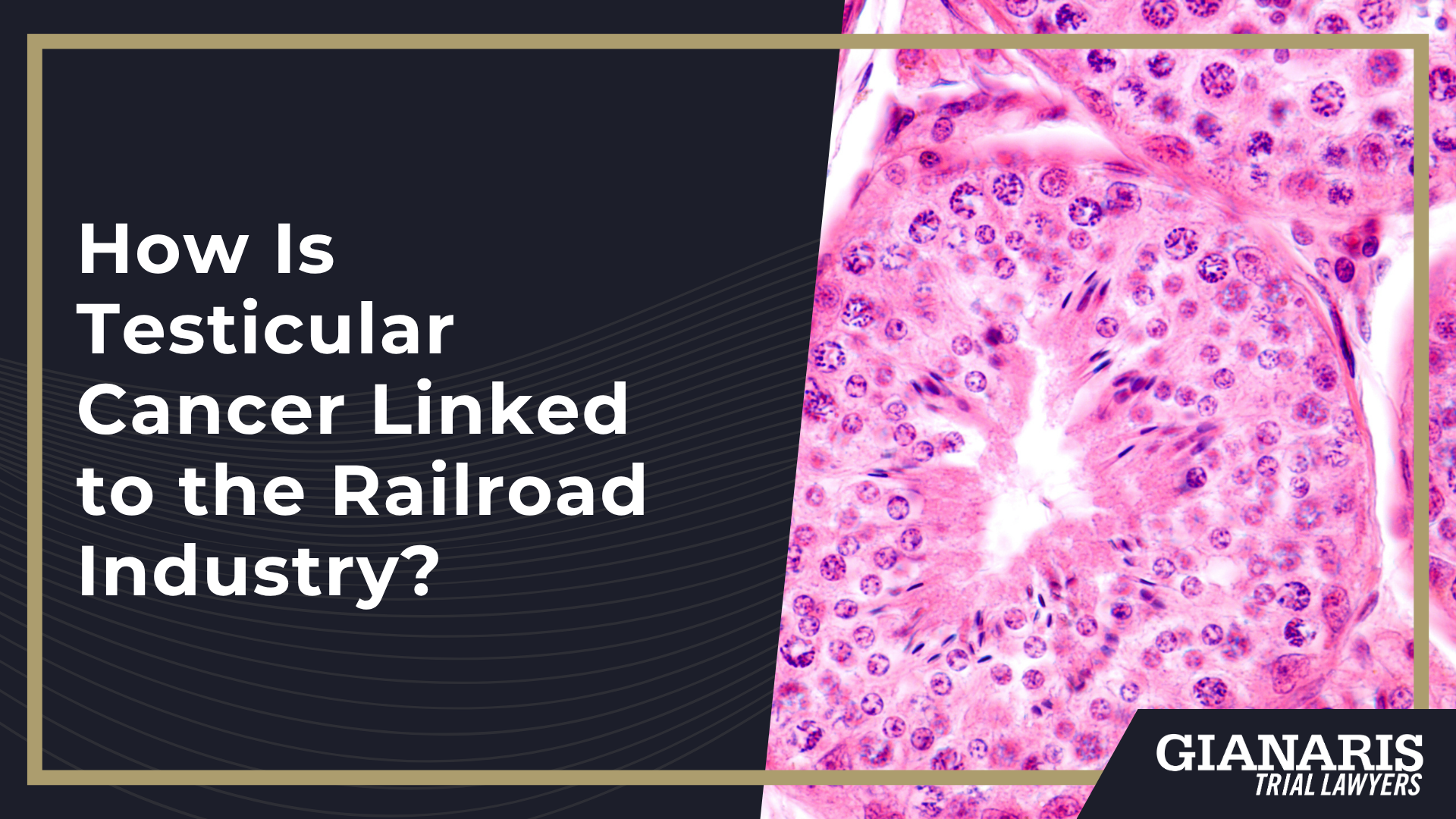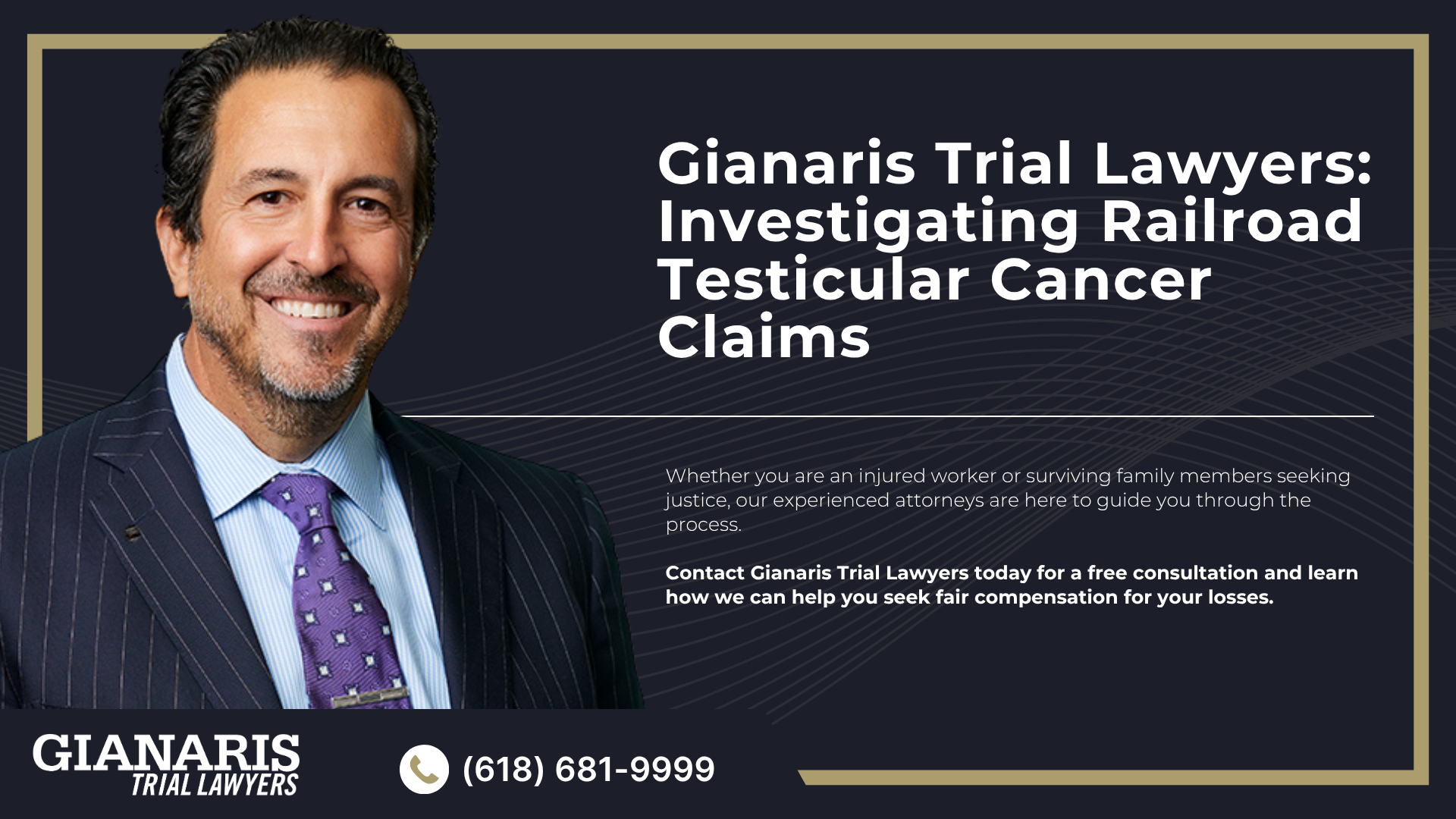Prolonged exposure to substances such as such as diesel exhaust, solvents, and creosote has been linked to organ damage, cellular mutations, and an increased risk of cancer diagnoses—including testicular cancer.
The railroad industry failed to adequately warn employees of these dangers or provide effective protections, despite growing evidence of harm.

Under the Federal Employers Liability Act (FELA), railroad companies may be held responsible if employer negligence contributed to a worker’s illness.
For affected workers, pursuing a railroad cancer claim provides a path toward accountability, medical support, and justice.
Scientific Research Supporting Testicular Cancer Claims in Railroad Workers
Occupational exposure to certain chemicals has increasingly been linked to a higher risk of testicular cancer.
Workers in trades that involve diesel exhaust, industrial solvents (like degreasers), pesticides, creosote, and welding or metal fumes may face repeated, low-level exposures over many years.
While the evidence is stronger for some cancers than for testicular cancer, researchers have raised credible concerns that these mixtures can disrupt hormones and damage cells in the testes over time.
Risk can be heightened in enclosed or poorly ventilated spaces, during hot work, or when protective gear and hygiene practices are inconsistent.
Because testicular cancer often affects younger men and can progress quickly, early reporting of symptoms and regular checkups are important for anyone with long-term chemical exposure at work.
If you think your job has put you at risk, document your tasks and exposures, talk to your healthcare provider, and ask about appropriate screening.
Studies and literature on testicular cancer and occupational exposures include:
- IARC Monographs – Diesel Engine Exhaust (Vol. 105): Group 1 for lung cancer; although direct human evidence for testicular cancer is limited, the mixture’s PAHs/nitro-PAHs and chronic inflammation/oxidative pathways support mechanistic plausibility when exposure is intense and prolonged in enclosed rail environments.
- IARC Monographs – Polycyclic Aromatic Hydrocarbons (e.g., benzo[a]pyrene; Vols. 92/100F): Several PAHs are Group 1/2A; animal data show gonadal toxicity, DNA adducts, and endocrine effects—relevant where creosote-treated ties and diesel soot contributed to persistent PAH contact.
- IARC Monographs – Trichloroethylene (TCE; Vol. 106), Perchloroethylene (PCE), Methylene Chloride (DCM): TCE (Group 1) and PCE/DCM (Group 2A) carry liver/kidney tumor signals and recognized endocrine/oxidative mechanisms; historically used degreasers in rail shops provide a solvent exposure bridge for testicular claims when paired with job-specific use records and inadequate ventilation/PPE.
- IARC Monographs – Benzene (Vol. 120): Group 1 with robust hematopoietic toxicity; although not a testicular carcinogen of record, co-exposure to benzene indicates overall hydrocarbon burden and foreseeable hazard in rail settings (probative for notice and duty to control).
- Welding Fumes (IARC Group 1, 2017): Established carcinogen producing systemic oxidative stress and metal-oxide particle deposition; supports a pro-carcinogenic milieu in high-heat shop tasks often performed adjacent to solvent/PAH sources.
- Endocrine-Disrupting Chemicals (EDCs) framework (WHO/UNEP reports & consensus reviews): Documents anti-androgenic/estrogenic actions, steroidogenesis interference, and developmental window susceptibility—mechanisms frequently cited to explain germ-cell tumor biology in settings with hydrocarbons, solvents, and combustion byproducts.
- Transportation/metalworking/printing cohorts & case-control studies: Several analyses report elevated odds ratios for testicular germ-cell tumors under sustained solvent/fume/PAH exposure (magnitude varies by design and exposure assessment), reinforcing a duration–intensity relationship applicable to rail crafts.
- OSHA/NIOSH standards (HazCom; solvent-specific rules; welding; diesel): Require monitoring, engineering controls, and medical surveillance—probative on foreseeability and employer obligations under FELA when such controls were delayed or absent.
Railroad Jobs at Risk for Exposure to Dangerous Substances Linked to Testicular Cancer
Not all railroad jobs carried the same degree of risk, but certain positions involved frequent and prolonged contact with toxic substances that are now tied to cancer claims.
Workers most at risk includes:
- Diesel mechanics and shop workers who spent years repairing engines and handling solvent-heavy cleaners in confined spaces.
- Locomotive engineers and conductors who regularly inhaled diesel exhaust in poorly ventilated engine cabs.
- Track maintenance crews who worked directly with railroad ties treated with creosote and other harmful chemicals.
- Sheet metal workers and pipefitters who faced both welding fumes and asbestos exposure while performing repairs.
For many of these employees, cumulative occupational exposure resulted in a significantly elevated risk of cancer diagnosis, including railroad testicular cancer.
Experienced railroad cancer attorneys use work histories, industrial hygiene records, and testimony to establish links between these jobs and the illnesses that followed.
Can I File a Wrongful Death Lawsuit if My Loved One Passed Away of Testicular Cancer?
Yes.
If your loved one was employed in the railroad industry and later passed away from testicular cancer, you may be able to pursue a wrongful death claim under the Federal Employers Liability Act.
These lawsuits allege that railroad companies failed to protect workers from toxic exposures—including diesel exhaust, solvents, and asbestos—that may have contributed to their cancer diagnosis.
Surviving family members may be entitled to compensation for medical expenses, lost wages, funeral costs, and the long-term financial and emotional toll of their loss.
Railroad cancer settlement amounts vary depending on the strength of the case, level of employer negligence, and documented losses, but these claims often provide meaningful support for grieving families.
Consulting with an experienced railroad cancer lawyer is the best way to determine eligibility, evaluate available evidence, and understand potential outcomes.






